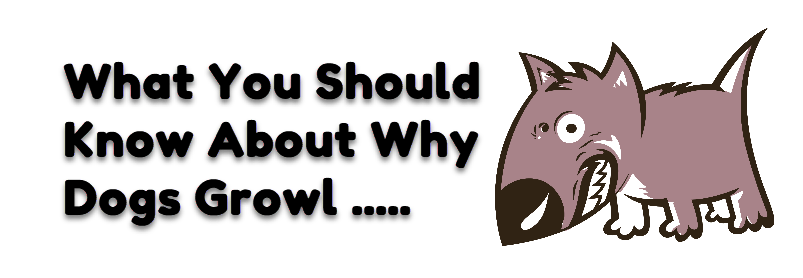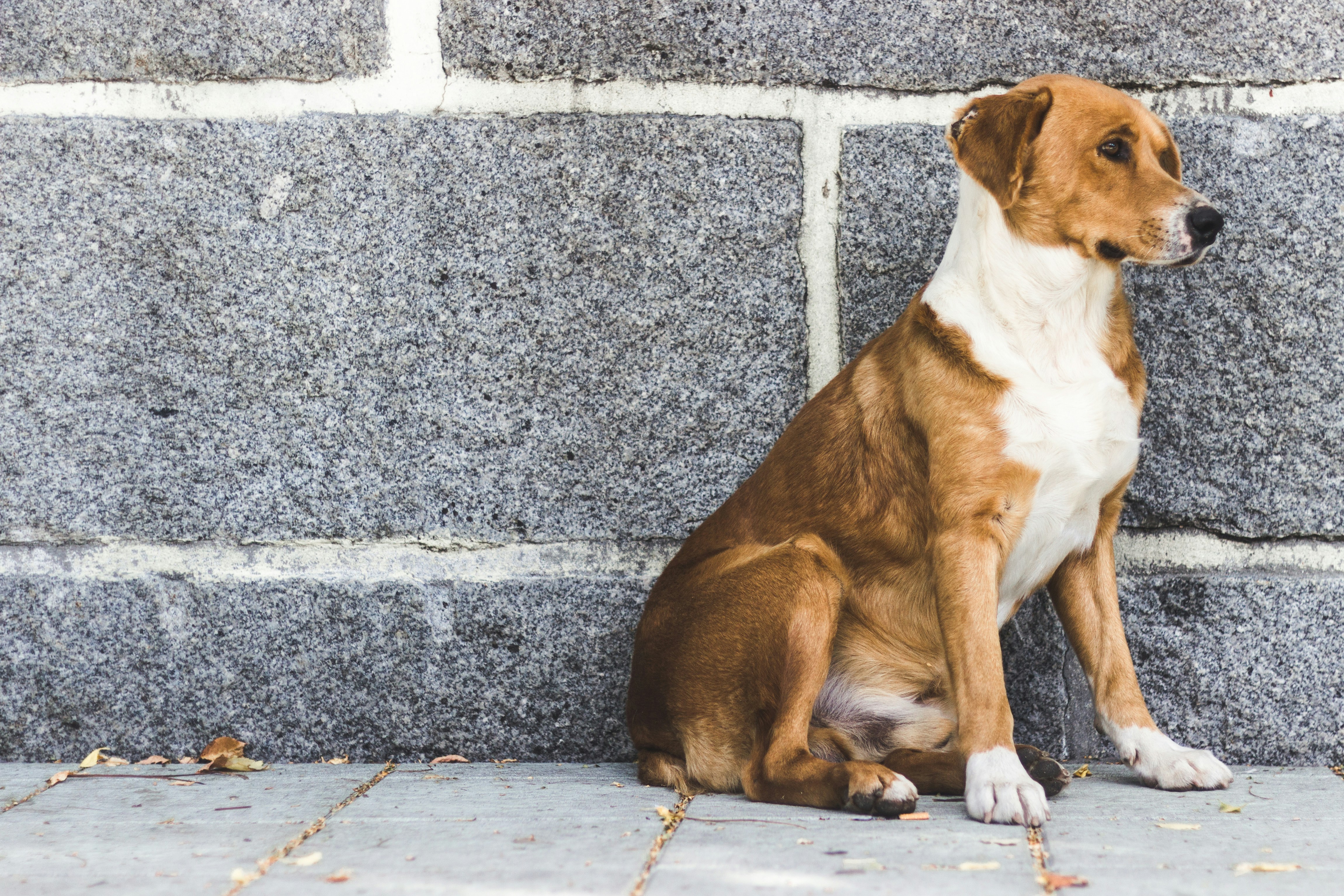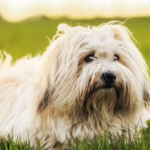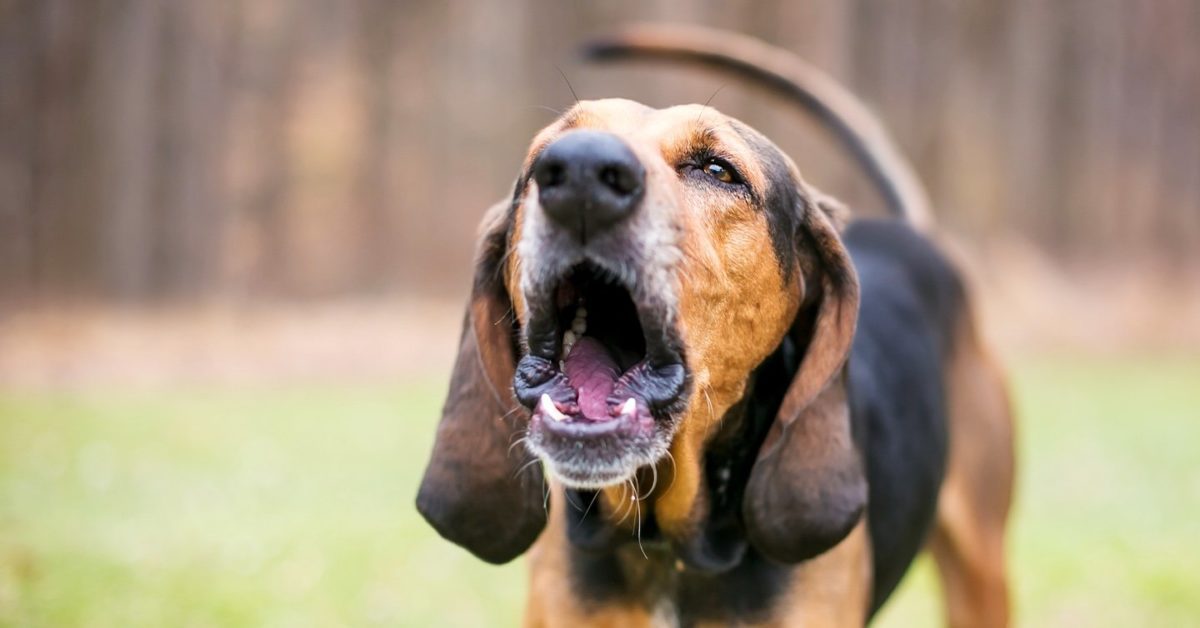

Do you have a dog that growls?
Does it make you worry that they’re being aggressive or hostile?
Or are you just curious as to why they do it?
No matter the reason, this article is for you. We’ll help explain why dogs growl, and how to handle the situation if your pup starts their low rumble.
Introduction
The bond between humans and dogs has been strong for centuries. There’s something about a big, burley canine that just makes us feel safe. Maybe it’s their imposing size or the way they seem to just know when we’re in danger. Whatever the reason, when a dog growls it’s usually a sign that they’re trying to protect us. But sometimes dog growls can be confusing and worrisome – what’s going on? In this article, we’ll help you understand why dogs growl, and how to deal with the situation if it happens to you. With factual data and expert advice, we’ll help you understand why your four-legged friend may be growling, and how to respond in the best way possible.
What Does it Mean When a Dog Growls?
When a dog growls, it could mean a few different things. It’s important to take the time to read the body language of the dog and assess the situation before trying to intervene. A growl could be a warning sign that the dog is feeling threatened and is ready to defend itself or its owner. It could also be an expression of fear, discomfort, or even pain. Some dogs may growl as a form of communication, such as when they want something or when they are playing. Knowing the context in which a dog is growling can help you determine how to best respond.
It’s important to remember that a dog’s growl can be intimidating and alarming, but it doesn’t necessarily mean that the dog is about to attack. If you feel threatened or scared by the growling, it’s best to stay calm and slowly back away from the situation. If the growling persists or becomes more aggressive, it’s best to leave the area immediately and call for help from a professional such as an animal behaviorist or veterinarian.
No matter what the reason for a dog’s growling, it’s important to remember that there’s something about a big, burly canine that just makes us feel safe. Dogs are often our protectors and best friends, and when they growl it’s usually a sign that they’re trying to protect us. Understanding why dogs growl and how to respond can help us keep ourselves and our furry friends safe in any situation.
What if the Growling is Directed at Me?
If you find yourself in a situation where a dog is growling at you, it’s important to stay calm and not panic. The first thing you should do is try to assess the situation. What could be the reason for the growling? Is the dog scared, feeling threatened, or trying to protect something? Is there something that you could adjust in the environment that could help calm the dog down? It’s important to remember that dogs don’t growl just to be mean, they do it to communicate with us.
Once you’ve assessed the situation, it’s important to take appropriate action. If the growling is directed at you, don’t try to approach or pet the dog. Instead, slowly back away from the dog and avoid making direct eye contact or sudden movements. Speak in a low and soothing voice and give the dog some space. If the dog continues to growl, it may be best to move away from the area or call for help from a professional.
No matter what, it’s important to remember that there’s something about a big, burly canine that just makes us feel safe. Maybe it’s their imposing size or the way they seem to just know when we’re in danger. Whatever the reason, when a dog growls it’s usually a sign that they’re trying to protect us. But sometimes dog growls can be confusing and worrisome – what’s going on? In this article, we’ll help you understand why dogs growl, and how to deal with the situation if it happens to you.
How to Differentiate Between Good and Bad Growling
When it comes to understanding the difference between good and bad growling, the first step is to recognize the context in which it’s happening. For example, if your dog is growling at a stranger or another animal, it could be a sign of aggression and should be taken seriously. On the other hand, if your dog is growling while playing with you or another family member, it could be a sign of excitement or pleasure. To help make sure you can differentiate between good and bad growling, pay attention to your dog’s body language. If they’re wagging their tail or have a relaxed posture, it’s likely that the growling is just part of their playfulness. If, however, their body language is tense and their fur is standing on end, then it’s likely that the growling is a sign of aggression or fear. In either case, it’s important to take the situation seriously and act accordingly. If your dog is growling because they’re afraid or in pain, try to get them away from the source of their discomfort and seek professional help if needed. If your dog is growling out of aggression, be sure to stay calm and remove yourself or anyone else in danger from the situation before attempting to address the issue.
Reasons Why Dogs Growl: Fear, Pain, Dominance and Territoriality
Dogs growl for many reasons, including fear, pain, dominance, territoriality, and protection. Often times, a dog will growl to express its discomfort with a situation or to let you know that they feel threatened. There’s something about a big, burley canine that just makes us feel safe. Maybe it’s their imposing size or the way they seem to just know when we’re in danger. Whatever the reason, when a dog growls it’s usually a sign that they’re trying to protect us. But sometimes dog growls can be confusing and worrisome – what’s going on? In this article, we’ll help you understand why dogs growl, and how to deal with the situation if it happens to you. Fear is one of the most common reasons why dogs growl. Dogs may growl in unfamiliar situations or when they are exposed to something new or out of their comfort zone. Pain is another common reason for growling in dogs. If your dog has recently been injured or is feeling unwell, they may become more irritable and more likely to growl at people or other animals. Dominance and territoriality are also common reasons for growling in dogs. If your dog feels as though their space is being invaded, or if another animal is getting too close for comfort, they may become aggressive and use growling as a form of intimidation. Lastly, some dogs may growl out of protection. If your dog senses danger to you or another member of your family, they may become protective and use growling as a way of warning potential threats away.
When a Dog is Showing Fearful or Protecting Behavior
When a dog is showing fearful or protective behavior, it is important to remember that they are trying to protect us from potential danger. They may be scared or confused, or trying to establish dominance over something they perceive as a threat. They may even be trying to protect us from ourselves, such as if we are displaying behavior that may be perceived as violent or aggressive. In either case, it is important to remember that a dog’s growl is not meant to be taken lightly. It is a warning sign that something is wrong and they need our help. That’s why it’s important to stay calm and patient when a dog is growling. Speak in soothing tones and try to avoid any sudden movements. If possible, try to distract the dog with a toy or treat. Doing so will help the dog understand that there is no need for alarm and no one is in danger. There’s something about a big, burley canine that just makes us feel safe. Maybe it’s their imposing size or the way they seem to just know when we’re in danger. Whatever the reason, when a dog growls it’s usually a sign that they’re trying to protect us. But sometimes dog growls can be confusing and worrisome – so it’s important to stay calm, speak in soothing tones, and try to distract the dog with a toy or treat if possible. With patience and understanding, we can help our canine friends feel safe and secure.
How to React When Your Dog is Showing Aggressive Growling
When a dog growls, it can be a frightening and confusing experience. It’s important to understand why dogs growl so that you can know how to handle the situation appropriately. Generally speaking, growling is a sign that your dog is feeling threatened or uneasy about something. It could be a sudden noise, another animal, or even an unfamiliar person. It’s important to remain calm and stay composed when your dog is showing aggressive behavior. If possible, identify the source of your dog’s anxiety and try to remove it from the situation. Speak in a low, soothing tone and try to maintain a safe distance from your dog. If the situation escalates and your dog becomes more aggressive, you may need to seek professional help from an animal behavior specialist. Remember, your dog may just be trying to protect you and keep you safe – so don’t take their growling personally.
Responding to Territorial or Protective Growls from Your Dog
When our four-legged friends growl, it can be startling and even frightening. But it’s important to remember that dogs are territorial animals, and growling is often just a way of expressing their protective instincts. They may be trying to tell us that they feel threatened, or that they don’t want us to approach a certain area or person. It’s important to stay calm and assess the situation. If the growling continues, try distracting the dog with a favorite toy or treat. Make sure your body language is relaxed and non-threatening, and talk to them in a soothing voice. If you can identify what’s causing the growl, you can work to eliminate or reduce the trigger. With time, patience and understanding, you can help your dog feel more confident and secure.
Handling Dominance Related Growling in Dogs
When it comes to handling dominance-related growling in dogs, it’s important to remember that it’s not necessarily a bad sign. Dogs growl to communicate their feelings and intentions, and the growling can actually be a way of them trying to protect us. It’s usually a warning sign that they are feeling uncomfortable and need some space. That’s why it’s important to remain calm and not react with aggression or fear. Instead, try to establish a safe and comfortable environment for them. If possible, provide them with a secure space away from other people and animals where they can feel safe. It’s also important to train your dog so they understand what is and isn’t acceptable behavior. With some patience and consistency, you can help your dog learn to express their emotions in a more appropriate way.
Is it Ever OK to Discipline a Dog for Growling?
It’s important to remember that growling is a normal behavior for dogs, and it’s usually a sign that they are trying to protect you or warn you of danger. While it can be alarming when a dog growls, it’s important to try and remain calm in the situation. It’s never OK to discipline a dog for growling, as this can make them more aggressive and fearful. Instead, try to identify what is causing the dog to feel nervous or threatened. Common triggers include loud noises, unfamiliar people, and certain objects. If the growling is directed at another person or animal, it’s important to remove the dog from the situation and separate them from the source of their fear. If it is directed at you, try to remove yourself from the situation or move away slowly. It’s also important to remember that dogs may growl out of fear or anxiety, so it’s important to be understanding and supportive. The best way to handle a dog growling is to provide reassurance and comfort, while also making sure everyone stays safe.
Final Thoughts on Understanding Why Dogs Growl and What To Do About It
Understanding why dogs growl is key to being able to effectively handle the situation when it arises. Dogs growl to communicate several different emotions, including fear, pain, aggression, and even playfulness. It is important to pay attention to the context in which the growl occurs, as well as the dog’s overall body language. If you notice that a dog is growling due to fear or pain, try to remove them from the situation and offer them comfort to help them feel safe. On the other hand, if the dog is growling as a sign of aggression or dominance, it is important to remain calm and assertive. Make sure that you are not making any sudden movements or speaking in a loud voice, which can further agitate the dog. It is also important to remember that dogs are individuals and may respond differently in different situations.











